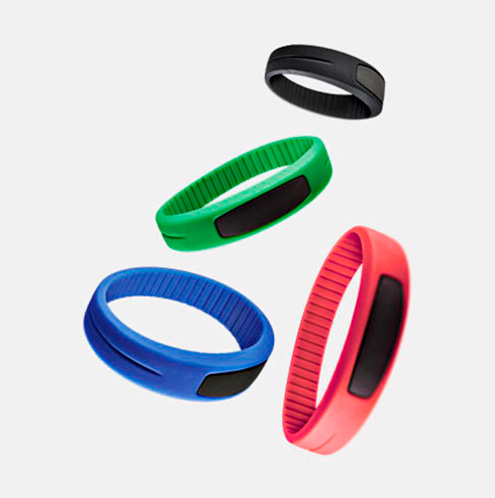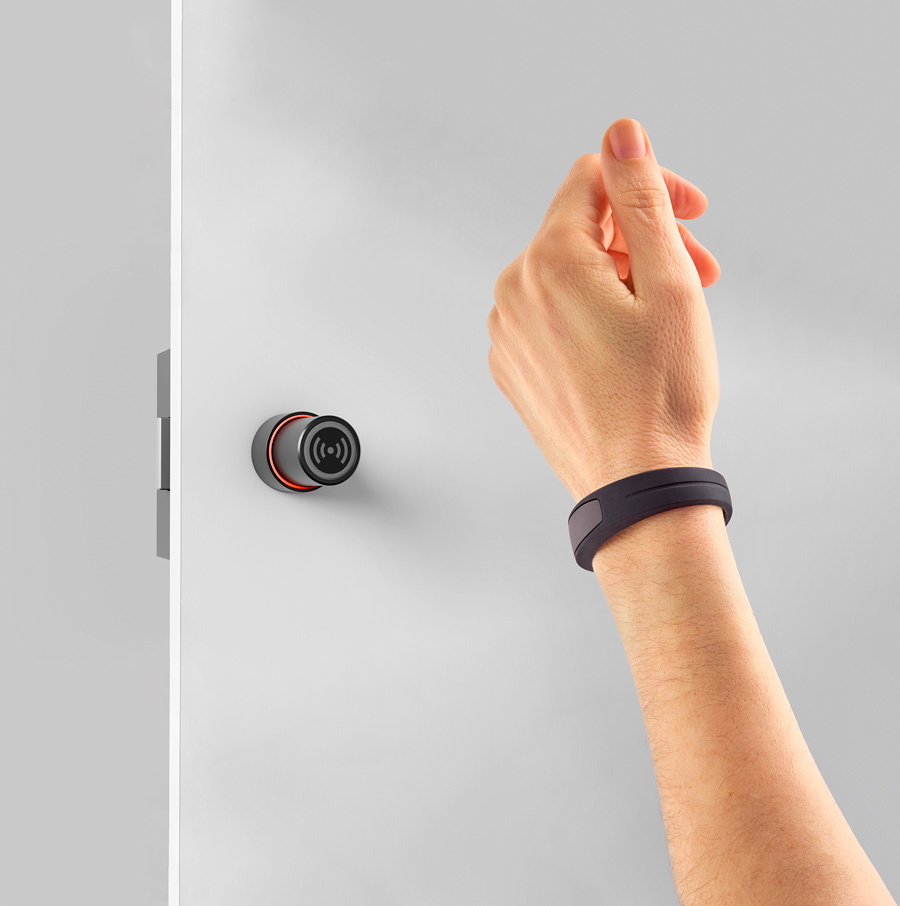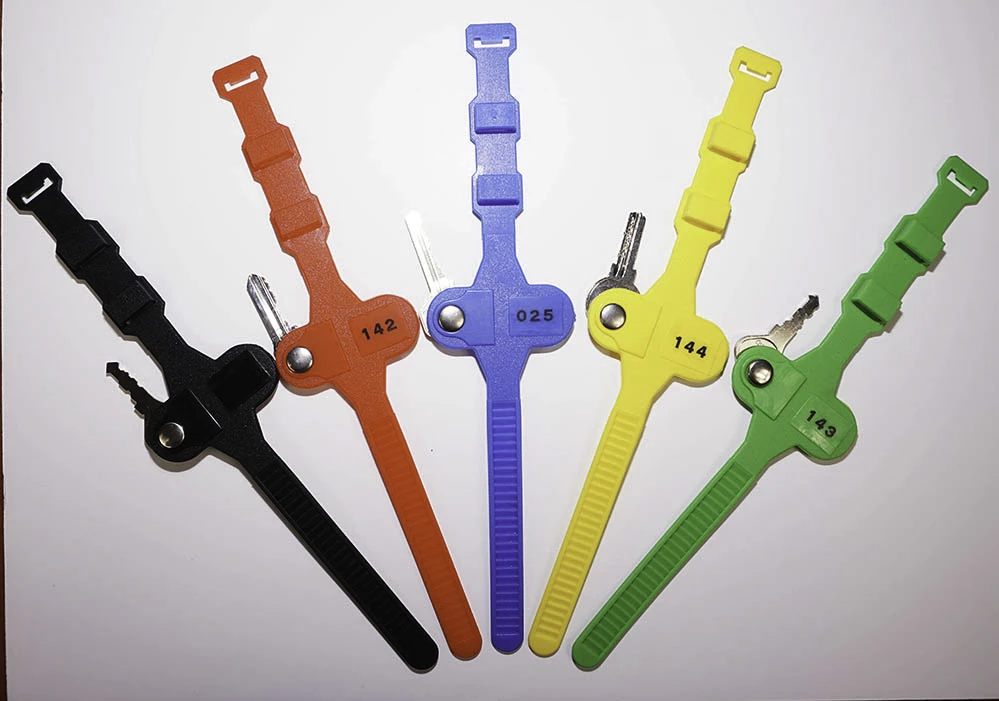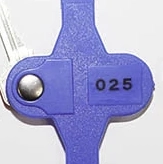Leisure Locker Key Control for Sports Centres & Pools
November 14, 2025


Managing locker keys represents one of the most persistent challenges facing sports centres and swimming pools across the UK. Every day, facility managers deal with lost keys, replacement costs, and frustrated customers. Moreover, ineffective key control systems create security vulnerabilities and operational bottlenecks. However, implementing the right combination of wrist straps, RFID technology, and management protocols transforms this challenge into a streamlined operation. This comprehensive guide explores proven methods to control leisure locker keys effectively whilst improving customer satisfaction and reducing costs.
- Understanding the Key Loss Problem
- Traditional Wrist Strap Solutions
- Advanced RFID Technology
- Material Considerations for Aquatic Environments
- Implementing Colour-Coding Systems
- Effective Numbering and Tracking Protocols
- Maintenance and Replacement Procedures
- Cost-Benefit Analysis
Leisure locker key control. Understanding the Key Loss Problem in Leisure Facilities
Lost locker keys plague leisure facilities nationwide. Statistics reveal that the average sports centre loses between 15 and 30 keys monthly. Consequently, replacement costs accumulate rapidly alongside staff time spent managing complaints. Furthermore, lost keys create security risks when customers cannot secure their belongings properly.
The financial impact extends beyond simple replacement expenses. Each lost key triggers a cascade of operational costs including staff intervention, potential lock replacements, and customer compensation. Additionally, frustrated customers may choose competing facilities offering better key management systems. Therefore, addressing key control deserves serious consideration as a strategic operational improvement.
Traditional loose keys present multiple problems simultaneously. Firstly, they easily slip from pockets during physical activity. Secondly, they lack identification making return difficult when discovered. Thirdly, they create hygiene concerns when passed between multiple users. Finally, they offer no tracking capability for facility management purposes.
Common Key Loss Scenarios
Swimming pools experience particularly high key loss rates. Water activities cause keys to fall from inadequate pockets or bags. Subsequently, keys sink to pool bottoms or disappear down drainage systems. Moreover, wet changing room floors increase the likelihood of keys being kicked aside or accidentally swept away during cleaning operations.
Fitness centres face different challenges with keys lost amongst gym equipment or exercise mats. Active workouts cause keys to fall from clothing during stretching, weightlifting, or cardiovascular exercise. Furthermore, group exercise classes create chaotic environments where small items easily become misplaced or accidentally taken by other participants.
Leisure locker key control. Traditional Wrist Strap Solutions for Enhanced Key Security

Wrist straps represent the most cost-effective solution for leisure locker key control. These simple devices attach keys directly to users’ wrists, eliminating pocket-related losses. Moreover, quality wrist straps withstand chlorinated water, sweat, and repeated daily use across multiple years.
Modern wrist strap designs incorporate specific features addressing leisure facility requirements. The materials must remain comfortable against skin during extended wear periods. Additionally, they require sufficient strength to prevent accidental breakage whilst maintaining flexibility for varied wrist sizes. Consequently, polymer formulations have evolved significantly to balance durability with user comfort.
Professional wrist strap systems specifically engineered for leisure environments demonstrate superior performance. These straps feature chemical-resistant construction tested extensively in municipal swimming pools. Furthermore, advanced polymer formulas minimise colour fading even under harsh chlorine exposure and ultraviolet light.
Design Features That Matter
Effective circumference measures approximately 220mm, accommodating most adult wrist sizes comfortably. The strap width balances visibility with comfort, typically ranging between 12mm and 15mm. Additionally, rivet attachment systems provide secure key mounting without requiring specialised tools for assembly or maintenance.
Brass rivets with nickel plating resist corrosion in wet environments. This construction ensures long-term reliability even with constant water exposure. Moreover, the rivet design allows quick key changes when lock maintenance or replacements occur. Staff can efficiently swap keys without replacing entire strap inventories.
Compatibility represents another crucial consideration. Quality wrist straps fit most locker lock keys with hole diameters of 4.5mm or larger. This universal compatibility covers major manufacturers including ASSA, Lowe and Fletcher, Ojmar, Helmsman, Probe, and Link systems. Therefore, facilities can standardise their strap inventory regardless of locker manufacturer diversity.
Material Science and Durability
Polymer selection fundamentally determines wrist strap longevity. Inferior materials crack, fade, or become brittle within months of installation. Conversely, properly formulated polymers maintain flexibility and colour integrity for three years or longer. Consequently, investing in quality materials reduces long-term replacement costs significantly.
Skin-friendliness matters equally alongside durability. Harsh materials cause discomfort, leading customers to remove straps prematurely. Subsequently, removed straps fail their primary purpose of securing keys to users. Therefore, hypoallergenic formulations that feel soft against skin improve compliance and system effectiveness.
Water slide compatibility requires specific design considerations. Straps must withstand sudden impacts and friction against slide surfaces without breaking or detaching. Additionally, they should maintain grip security during high-speed water activities. Testing protocols simulating thousands of slide uses verify structural integrity before commercial deployment.
leisure locker key control. Advanced RFID Technology for Keyless Locker Access

RFID technology revolutionises locker access control by eliminating physical keys entirely. Instead, users wear RFID silicone wristbands containing embedded microchips. Simply waving the wristband near compatible readers unlocks designated lockers. Consequently, key loss becomes impossible whilst security improves dramatically.
MIFARE Classic 1K chips represent the industry standard for leisure facility applications. Operating at 13.56 MHz frequency, these chips provide 1 kilobyte of secure EEPROM memory. This capacity stores access credentials, user identification data, and transaction records. Moreover, MIFARE technology integrates seamlessly with existing building access systems and payment platforms.
Contactless authentication delivers multiple operational advantages simultaneously. Firstly, transaction speeds increase dramatically compared to mechanical key systems. Users gain locker access within milliseconds of wristband presentation. Secondly, wear-related maintenance decreases because no mechanical components require servicing. Thirdly, audit trails automatically record all locker access events for security and usage analysis.
Implementation Considerations
Successful RFID deployment requires careful planning and compatible infrastructure. Lockers must feature electronic locks specifically designed for RFID integration. Additionally, facilities need reader devices, central management software, and network connectivity. Therefore, initial investment costs exceed traditional mechanical systems significantly.
However, operational savings accumulate rapidly following installation. Staff time previously spent managing lost keys redirects toward customer service improvements. Furthermore, automated tracking eliminates manual check-in procedures and locker assignment administration. Consequently, many facilities achieve return on investment within 18 to 24 months of RFID implementation.
Pre-programmed wristbands streamline deployment for facilities using Ojmar OTS lock systems. These wristbands arrive ready for immediate use after site code configuration. Alternatively, blank wristbands allow in-house programming using facility-specific encoding equipment. This flexibility accommodates diverse operational requirements and existing infrastructure configurations.
Security Advantages
RFID systems provide superior security compared to traditional mechanical keys. Each wristband contains unique encrypted credentials impossible to duplicate without authorised programming equipment. Additionally, lost wristbands can be deactivated instantly through central management software. Subsequently, found wristbands become useless to unauthorised users.
Access logging creates comprehensive audit trails for security investigations. System administrators can review exactly when specific wristbands accessed particular lockers. This capability proves invaluable when investigating theft complaints or other security incidents. Moreover, usage pattern analysis identifies operational inefficiencies and capacity planning opportunities.
Integration with payment systems enables cashless facility operations. Customers can charge locker fees, vending purchases, and service bookings directly to their wristbands. This convenience improves customer experience whilst reducing cash handling requirements and associated security risks. Furthermore, integrated systems provide detailed revenue tracking and reporting capabilities.
Leisure locker key control. Material Considerations for Aquatic Environments

Swimming pools present uniquely challenging environments for wrist strap materials. Chlorinated water attacks many common polymers, causing brittleness and premature failure. Additionally, ultraviolet radiation from skylights and outdoor areas accelerates degradation. Therefore, material selection requires careful consideration of chemical resistance and environmental stability.
Silicone offers excellent performance characteristics for aquatic applications. This material maintains flexibility across wide temperature ranges whilst resisting chemical attack. Moreover, silicone remains hypoallergenic and comfortable during extended wear periods. Consequently, silicone wristbands dominate high-quality leisure facility installations.
Vinyl represents a budget-friendly alternative suitable for less demanding applications. Modern vinyl formulations provide adequate chlorine resistance for typical swimming pool use. However, vinyl generally exhibits shorter lifespans compared to silicone options. Additionally, vinyl may feel less comfortable against skin, particularly when wet.
Testing Protocols
Reputable manufacturers conduct extensive testing before releasing products for commercial use. Accelerated aging tests simulate years of chlorine exposure within weeks. Additionally, mechanical stress testing verifies that materials maintain integrity under repeated bending and stretching. Subsequently, only formulations meeting stringent durability standards reach market availability.
Real-world validation provides the ultimate performance verification. Leading suppliers test their products in operational municipal leisure centres for extended periods. This approach reveals practical issues that laboratory testing might miss. Consequently, field-tested products demonstrate proven reliability rather than theoretical specifications alone.
Colour fastness testing ensures that wrist straps maintain visual appearance throughout their service life. Inferior products fade dramatically within months, creating unprofessional appearances and identification difficulties. Conversely, quality colour formulations resist both chemical and ultraviolet degradation. Therefore, appearance retention serves as a reliable indicator of overall material quality.
Leisure locker key control. Implementing Effective Colour-Coding Systems

Colour-coding transforms wrist straps from simple key carriers into powerful operational tools. Different colours can designate locker banks, user categories, or facility zones. Consequently, staff can identify issues and assist customers more efficiently. Moreover, visual systems reduce language barriers in multicultural facilities.
Standard colour palettes typically include black, blue, yellow, green, orange, red, white, and grey options. This range provides sufficient variety for most facility requirements. Additionally, custom colours become available for bulk orders requiring specific branding or expanded coding schemes. Specialised wrist band systems offer comprehensive colour selections matching facility-specific needs.
Zone-Based Colour Schemes
Large facilities benefit from colour-coded zone identification. For example, blue wristbands might designate swimming pool changing areas whilst green indicates gym facilities. Subsequently, staff can quickly direct customers to appropriate locations based on wristband colour alone. This system proves particularly valuable during peak periods when clear communication becomes challenging.
Maintenance teams also benefit from colour-based organisation. Different colours can indicate locker banks requiring specific key types or lock mechanisms. Therefore, technicians carry appropriate parts and tools for their assigned maintenance zones. Consequently, repair efficiency improves whilst reducing incorrect part usage and return trips.
User Category Differentiation
Colour-coding can distinguish between membership types or access levels. Premium members might receive distinctive colours providing immediate recognition for staff. Similarly, temporary day-pass users could wear different colours than annual members. Subsequently, access control and customer service delivery improve through instant visual identification.
Children’s programmes benefit enormously from colour-based identification. Youth swimming lessons might assign specific colours to different age groups or skill levels. Consequently, instructors can quickly verify that children access appropriate facilities. Additionally, parents can easily identify their children by wristband colour in crowded environments.
Effective Numbering and Tracking Protocols

Sequential numbering provides essential identification and tracking capabilities. Wrist straps can be numbered from 0001 to 9999, accommodating facilities of virtually any size. Moreover, printed numbers enable quick locker identification when customers cannot remember their assigned location. Consequently, customer frustration decreases whilst staff efficiency improves.
Hot foil printing represents the preferred numbering method for long-term durability. This technique creates raised, wear-resistant numbers that remain legible throughout the strap’s service life. Conversely, inferior printing methods fade quickly or wear away, defeating the numbering system’s purpose. Therefore, printing quality deserves serious consideration during product selection.
Number-to-Locker Correlation
Matching wristband numbers directly to locker numbers creates the simplest operational system. Customers receive wristband 0247 for locker 247, eliminating confusion and memory requirements. Additionally, this approach enables staff to locate customers’ lockers instantly when assistance becomes necessary. Subsequently, service quality improves whilst reducing time spent on basic enquiries.
Alternative numbering schemes can provide additional security through non-obvious correlations. For example, wristband numbers might correspond to database entries rather than physical locker numbers. This approach prevents unauthorised individuals from determining locker locations simply by observing wristband numbers. However, it requires computerised lookup systems and trained staff members.
Inventory Management
Numbered wristbands enable precise inventory tracking and loss prevention. Missing number sequences immediately alert staff to potential theft or misplacement issues. Additionally, damaged straps can be recorded by number, identifying patterns that might indicate quality problems or specific high-wear zones.
Rotation schedules extend overall inventory life by distributing wear evenly. For example, different numbered ranges might be issued on alternating days or weeks. Consequently, the entire inventory ages uniformly rather than specific straps receiving disproportionate use. This strategy optimises replacement timing and budget planning.
Leisure locker key control. Maintenance and Replacement Procedures
Systematic maintenance extends wrist strap service life whilst maintaining hygiene standards. Simple cleaning protocols using soap and water remove accumulated dirt and body oils. Additionally, periodic sanitisation using approved disinfectants reduces cross-contamination risks. Subsequently, customers perceive higher facility standards and cleanliness.
Inspection routines should identify damaged straps before they fail during customer use. Staff can quickly examine straps during cleaning cycles, removing any showing cracks, excessive wear, or rivet loosening. Consequently, customer inconvenience and potential injury risks decrease significantly. Moreover, proactive replacement prevents emergency situations requiring immediate attention.
Cleaning Protocols
Daily rinsing under running water removes surface contamination and chlorine residue. This simple practice significantly extends colour retention and material integrity. Additionally, weekly washing with mild soap eliminates body oils and lotions that accelerate material degradation. Subsequently, wristbands maintain both appearance and functionality throughout their intended service life.
Sanitisation procedures vary based on facility health and safety requirements. Many leisure centres implement quarterly deep cleaning using approved disinfectants. Healthcare facilities or those serving immune-compromised populations might require more frequent sanitisation. Therefore, cleaning schedules should reflect specific facility risk assessments and regulatory requirements.
Replacement Strategies
Planned replacement schedules prevent accumulation of worn inventory. Rather than waiting for complete failure, facilities can retire straps after predetermined usage periods. For example, replacing 25% of inventory annually ensures consistent appearance and reliability. Additionally, staged replacement distributes budget requirements across financial years.
Spare inventory management prevents operational disruptions when straps fail unexpectedly. Maintaining 10-15% spare capacity accommodates normal attrition whilst providing emergency replacement capability. Moreover, bulk purchasing of spares often secures volume discounts and reduces per-unit costs significantly.
Detailed locker maintenance services extend beyond wrist straps to encompass complete system integrity. Professional service providers offer comprehensive maintenance programmes including lock servicing, key cutting, and component replacement. Therefore, coordinating wrist strap replacement with broader maintenance cycles optimises operational efficiency.
Cost-Benefit Analysis of Key Control Systems
Financial justification for improved key control systems requires examining both obvious and hidden costs. Direct expenses include replacement keys, lock changes, and staff time managing complaints. However, indirect costs such as customer dissatisfaction and competitive disadvantage often exceed direct expenses. Therefore, comprehensive analysis reveals substantial benefits from systematic key control improvements.
Traditional Key System Costs
Average facilities lose approximately 240 keys annually at replacement costs of £8-£15 per key. Consequently, direct key replacement expenses range between £1,920 and £3,600 annually. Additionally, staff time resolving key issues averages 3-5 hours weekly at typical labour rates of £12-£18 per hour. Subsequently, annual labour costs attributable to key management reach £1,872 to £4,680.
Customer compensation and goodwill gestures further increase total costs. Free day passes, refunds, or complementary services often result from key loss inconvenience. These expenses, whilst difficult to quantify precisely, typically add £500-£1,000 annually to key management costs. Therefore, total annual costs for traditional loose-key systems frequently exceed £4,000-£9,000 for medium-sized facilities.
Wrist Strap System Investment
Quality wrist strap systems require initial investment of approximately £3-£5 per unit. A facility with 200 lockers therefore spends £600-£1,000 for complete inventory including spares. Additionally, annual replacement costs average 20-25% of inventory value, or £120-£250 yearly. Consequently, total first-year investment reaches approximately £720-£1,250.
Key loss rates decrease by 85-95% following wrist strap implementation. Therefore, direct key replacement costs drop to £288-£540 annually. Staff time managing key issues similarly decreases to approximately 1 hour weekly, reducing labour costs to £624-£936 annually. Subsequently, annual operating costs under wrist strap systems total approximately £1,032-£1,726.
Net annual savings after wrist strap implementation typically range between £2,274 and £6,024 for medium-sized facilities. Therefore, return on initial investment occurs within 2-6 months of deployment. Subsequent years deliver continued savings with minimal additional investment beyond routine replacement. Consequently, financial justification for wrist strap systems proves compelling across virtually all facility sizes.
RFID System Economics
RFID implementations require substantially higher initial investment. Electronic locks cost £80-£150 per locker whilst wristbands run £3-£5 each. Therefore, converting 200 lockers to RFID costs approximately £16,600-£30,600 including infrastructure and software. However, operational savings accumulate more dramatically than traditional wrist strap systems.
Key losses become virtually impossible with RFID systems, eliminating replacement costs entirely. Additionally, automated check-in processes reduce staffing requirements by 0.5-1.0 full-time equivalent positions. Consequently, annual labour savings reach £12,000-£24,000 depending on facility size and wage rates. Subsequently, larger facilities achieve return on investment within 18-30 months despite higher initial costs.
Revenue enhancement opportunities further improve RFID system economics. Integrated payment capabilities increase ancillary spending by 15-30% through improved convenience and impulse purchase enablement. Additionally, usage tracking enables dynamic pricing strategies optimising capacity utilisation. Therefore, total economic benefits often substantially exceed direct cost savings alone.
Leisure locker key control. Staff Training and Customer Communication
Successful key control systems require comprehensive staff training and clear customer communication. Employees must understand system operations, troubleshooting procedures, and customer service protocols. Moreover, customers need clear instructions for proper wrist strap use and care. Therefore, implementation planning should allocate resources for training and communication materials.
Staff Training Components
Front-desk staff require training on strap issuance, size selection, and proper fitting techniques. Additionally, they need troubleshooting skills for common issues such as lost straps or damaged rivets. Customer service training should emphasise friendly assistance whilst maintaining system integrity and security protocols.
Maintenance personnel need detailed instruction on cleaning procedures, inspection criteria, and replacement protocols. Furthermore, they should understand inventory management systems and reordering procedures. Consequently, comprehensive training prevents operational disruptions from supply shortages or maintenance oversights.
Customer Education
Clear signage throughout changing areas reinforces proper wrist strap use. Visual instructions with photographs demonstrate correct wearing technique and care requirements. Additionally, multilingual materials accommodate diverse customer populations. Subsequently, compliance improves whilst reducing staff intervention requirements.
Welcome materials for new members should include wrist strap information alongside other facility policies. Explaining the system’s benefits—particularly improved security and convenience—encourages positive reception. Moreover, emphasising that strap systems protect customers’ belongings frames them as service enhancements rather than restrictions.
Leisure locker key control. Integration With Broader Access Control Systems
Modern leisure facilities increasingly implement comprehensive access control spanning multiple systems. Locker management can integrate seamlessly with building entry, payment processing, and booking systems. Consequently, customers enjoy streamlined experiences whilst facilities gain powerful management capabilities.
Unified Access Credentials
RFID wristbands can serve multiple functions beyond locker access. The same wristband might control building entry, spa treatment areas, and restricted facilities. Additionally, integrated systems eliminate the need for multiple cards, keys, or credentials. Subsequently, customer convenience improves dramatically whilst reducing lost credential issues.
Payment integration enables cashless facility operations. Customers can charge purchases to their wristbands throughout the facility including cafes, vending machines, and retail areas. Moreover, automatic billing to membership accounts eliminates payment friction entirely. Therefore, ancillary revenue often increases following integrated access system deployment.
Data Analytics Opportunities
Integrated systems generate valuable usage data informing operational decisions. Locker occupancy patterns reveal peak usage times and capacity constraints. Additionally, movement tracking through facility zones identifies popular amenities and underutilised areas. Consequently, managers can optimise staffing, maintenance schedules, and future expansion plans.
Member behaviour analysis enables personalised marketing and service improvements. Understanding individual usage patterns allows targeted communications about relevant services and programmes. Furthermore, identifying at-risk members through decreased activity enables retention interventions. Subsequently, integrated systems transform basic access control into strategic business intelligence platforms.
Conclusion: Implementing Your Key Control Strategy
Effective leisure locker key control requires matching solutions to specific facility requirements and budgets. Traditional wrist strap systems deliver excellent results for most sports centres and swimming pools at modest investment levels. Conversely, larger facilities or those seeking premium customer experiences may justify RFID technology’s higher costs through operational savings and revenue enhancement.
Successful implementation demands attention to material quality, proper sizing, maintenance protocols, and staff training. Furthermore, colour-coding and numbering systems transform basic key control into powerful operational tools. Subsequently, facilities enjoy reduced costs, improved security, and enhanced customer satisfaction simultaneously.
Begin your key control improvement by assessing current loss rates and associated costs. Subsequently, evaluate available solutions considering both immediate expenses and long-term operational impacts. Finally, develop comprehensive implementation plans addressing equipment, training, and communication requirements. Consequently, your facility will deliver superior security and convenience whilst reducing operational costs and frustrations.Ready to Improve Your Locker Key Management?
Contact Total Locker Service for expert guidance on wrist strap systems, RFID solutions, and comprehensive locker maintenance. Our experienced team helps leisure facilities across the UK implement effective key control systems tailored to specific operational requirements and budgets. Call 01284 749211 or email sales@totallocker.co.uk for immediate assistance.
Additional Resources
- UK Active – Industry Standards and Best Practices
- CIMSPA – Chartered Institute for the Management of Sport and Physical Activity
- Swim England – Facility Management Guidelines
- Leisure Industry Information – Market Intelligence and Insights
Discover more from Blog Total Locker Service
Subscribe to get the latest posts sent to your email.